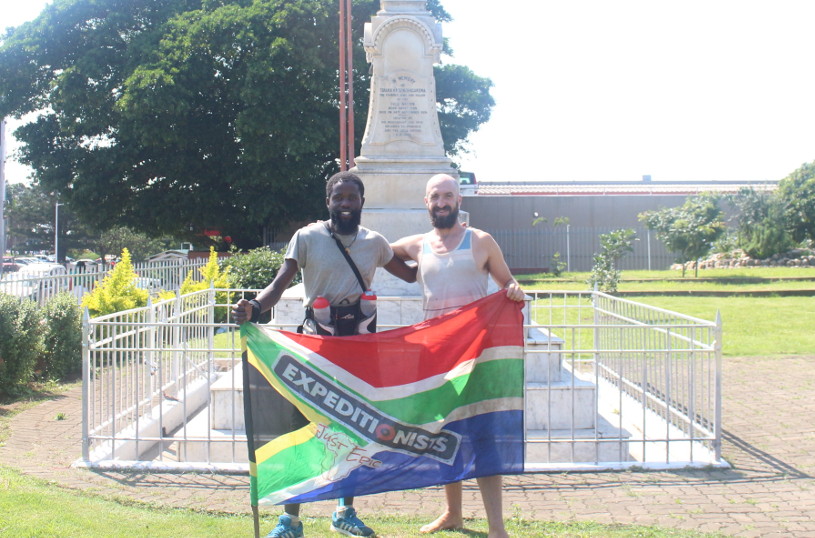
2016 Next Challenge Grant winner Thommo Hart recently walked and ran one thousand miles across South Africa, with his friend Simphiwe Ngcobo.
They dragged carts filled with their supplies across tar so hot you could fry an egg on it (which they did). They marched through sand and over rocks with their feet rubbed raw, following in the footsteps of a young John Ross.
Here is Thommo’s story…
[one_sixth]–[/one_sixth][two_third][box]
The Next Challenge Grant
Thommo won a £200 award from The Next Challenge Grant.
The money came from me, other adventurers and members of the public.
[/box][/two_third][one_sixth_last]–[/one_sixth_last]
The John Ross Challenge
by Thommo Hart
In 2016, my fellow expeditionist, Simphiwe Ngcobo, and I walked 1,558km (968 miles) from Pietermaritzburg in South Africa to Maputo in Mozambique and then back to Durban in South Africa. We were following in the footsteps of a famous young Scottish boy called John Ross who did the journey 200 years ago. To make matters even more challenging, I did the whole expedition, all 1,558 km, barefoot to raise funds for cancer patients.
What is an expedition?
An expedition, in its briefest description is a journey undertaken by an individual or a group of people with a particular purpose, the most common being exploration, discovery, research, war or a cause. Now, being a fan of Dan Eldon and his philosophy of living life as an adventure, where one’s journey is the real destination in life, I see expeditions as mini-life events that have the purpose of growing and developing you as a person. Thus, I am a person who has created a lot of expeditions during my life with purposes ranging from love, exploration, academia, discovery and wellbeing. This led me to the establishment of a platform called Expeditionists where I could express and market my expeditions and provide an open and accessible space for fellow aspiring African adventurers. Upon launching Expeditionists, I did my first physically challenging expedition called the John Ross Challenge.
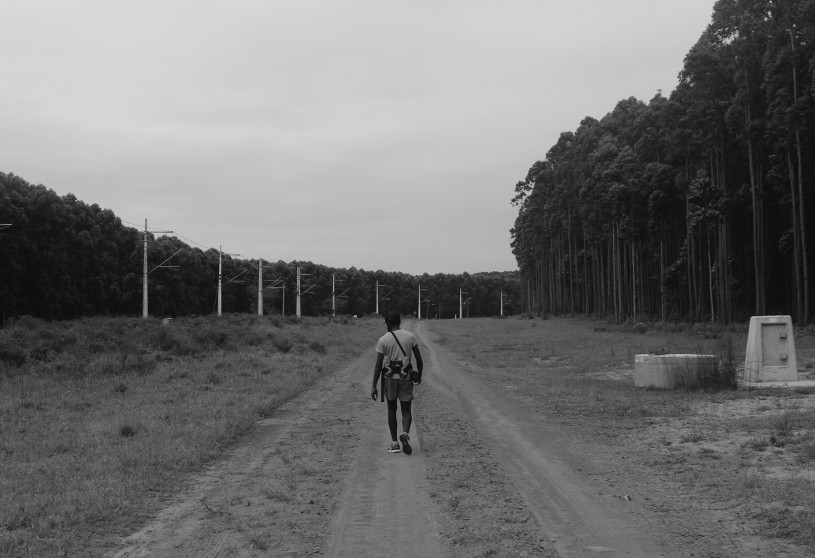
Background: John Ross
In 1826, a young Scot nicknamed John Ross undertook an extraordinary journey across the Southern African wilderness from Port Natal to Delagoa Bay on foot for the purpose of fetching medical supplies for the settlement in Port Natal. Years later, this journey became famous around the world and created a South African folklore hero. He is celebrated in South Africa to this day. There are buildings, schools and highways named after him.
John Ross, whose real name was Charles Mclean, was a young ship apprentice on a merchant ship called the Mary which struck a sand bar in a shallow bay on the South African coast. The crew created a settlement in the bay called Port Natal, which today is called Durban. During their time at the settlement they were trading with the Zulu nation that was ruled by King Shaka at the time. The king was very inquisitive about these new visitors to his land, thus he invited them to his Kingdom. Visits to his Kingdom became regular for the crew, for Shaka wanted to learn about British society, did not trust them and thus he liked to keep in close sight of their activities. During this time the Zulus took an instant liking to this strange small boy with bright red hair. Charles becomes one of King Shaka’s most trusted friend, advisor and translator. In 1927, sickness and disease struck the Port Natal settlement and when supplies ran low, Charles took it upon himself to get more from Delagoa Bay. Shaka was so impressed by this courage from such a small boy that he provided support for the boy’s expedition with an Impi of 30 warriors. The boy made it to the Delagoa fort, brought medical supplies, and returned to the settlement a hero.
This story of John Ross has always captured my imagination since I was a young boy. Thus, when I got the chance to relive this famous South African expedition, I challenged myself to do the historic journey in his footsteps, barefoot, for the cause of raising funds for cancer medical support after the death of my mother from brain cancer.
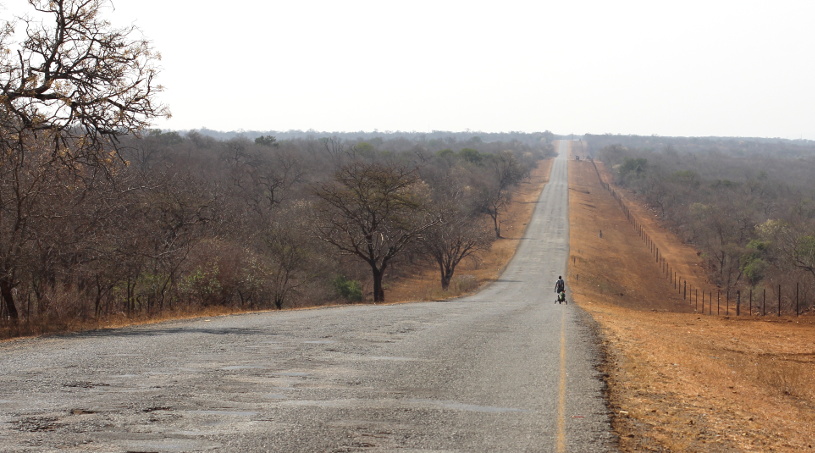
Preparing for the journey
In August 2016, just a month before the start of the expedition, things were manic trying to find sponsors to purchase food, clothing and equipment needed for the expedition. Throughout the year, Simphiwe and I had done our training, running the roads and trails of Pietermaritzburg. However, we hadn’t started our equipment stock up.
First lesson learnt. Always create a spreadsheet of the equipment required at the start of your preparations and then tick each item off as you receive them. Then create a proposal with a budget that you can send off to potential sponsors. Our funding of the equipment got off to a rocky start with little interest from sponsors. However, as we fondly talked and talked about the expedition to anybody who was willing to listen to us, funding started to trickle in.
This was about the time I got an email back from the Next Challenge Grant. My application had been selected for a two hundred pound grant. This was so awesome. Tim Moss is really an inspiring adventurer and his sponsors have really had an impact in making aspiring adventurers’ dreams come true with the Next Challenge Grants. We really needed the money to purchase a solar charging kit for all our electronic gear. The idea of the Next Challenge providing grants from supporters and sponsors of Tim Moss to aspiring adventurers is such a unique social impact initiative that I would love to establish something similar for aspiring African adventurers who don’t have the resources to venture out into the world. Anyway, with all our gear and preparations finalized on the second to last day before our starting date, all there was to do was wait and have a farewell dinner.
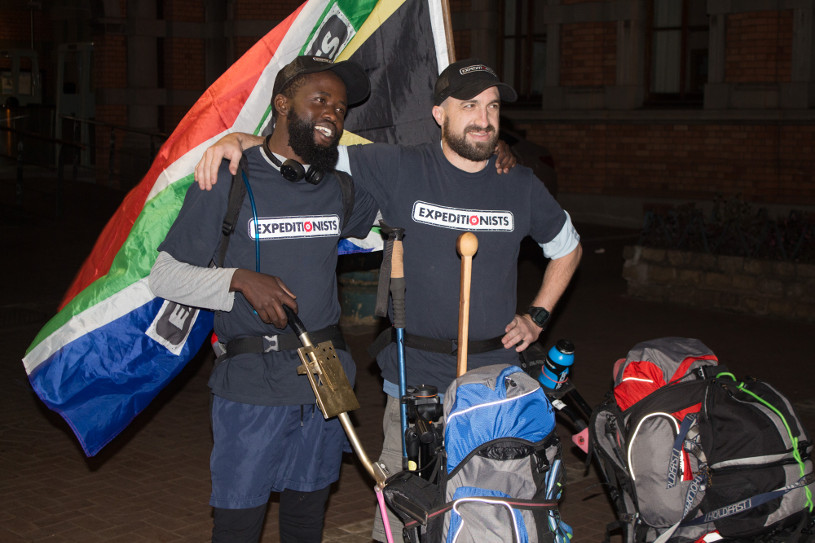
Setting off
On the morning of the 20 of August, at 5 am in the morning, friends and family met us at the City Hall in Pietermaritzburg. Butterflies were buzzing through my body with excitement, fear, and adrenaline. By 5:30 we were off at a great pace running through the streets of the city to get to the open fields of KwaZulu-Natal as soon as possible. There were a lot of strange looks from people on the street. These strange looks would carry on with us all the way to the end of the expedition. On our first day, we managed to run 40 km pulling of 30 kg road carts with all our equipment. This was the first and last time we would run most of our determined distance for a day. By the third day we had picked up injuries and had to rest on the fourth day to get treatment for the muscles on my legs.
After recovering, we headed down the Kranskop pass into the Tugela valley. With 40 degree heat and a 30 kg road cart pulling me and my bare feet down the rough gravel road, thoughts of quitting floated through my head even with the beautiful landscape before me. By the time we reached our destination for the day, I was in tears. Being a sufferer of depression, moments and thoughts like that day can sink you into a hole that results in quitting instead of reflecting on the pain, sleeping on it and then taking the next day as a new day and beginning. Ultimately, my grumpy mind and sore feet went to bed early and woke up then next day refreshed with the last day in the past and the excitement of what lay beyond the river for me. Life is a series of adventures, both failures and successes. If I had not experienced that pain and reflected on my purpose of walking barefoot, the expedition would have failed to be an adventure and have any purpose.
From that point on, the expedition got easier. Its was still painful with lots of swear words shouted at the top of my voice. But each day was a new adventure with new people to meet, new experiences and breathtaking sceneries. By the second week, we had reached Eshowe and made some friends for life. From Eshowe, we raced through the kilometers, reaching Swaziland by the third week. Due to the harsh drought, this country was bare-naked dry with hardly a single blade of grass. Swaziland produced soaring heats of above 35 degrees, making the road extremely hot. On a day where temperatures reached 40 degrees, we even fried an egg on the tar. The trick to walking barefoot on such heat is to never stop, but if you do stop, pour water on the tar and then move your cart around so that it puts shade where your feet are. On our second to last day before exiting Swaziland, I got a tummy bug that rendered me quite pale and needing the bathroom every 5 km. However, with great mental strength and determination, I got through the projected 30 km and was rescued by a clinic on the side of the road that gave me medicine, lots of water and a place for Simphiwe and I to camp and rest. That night I came to the belief this world is a dramatic arena, and each of our lives is supposed to show that in the best possible way. The struggle I experienced that day and how I came through it to reach our objectives was a journey. A journey that really sucked with failures, but at the end of the day it was rewarding with the humble experience of being cared for by the clinic and church staff with free medicine, water and food. Tomorrow was another day and another new adventure.
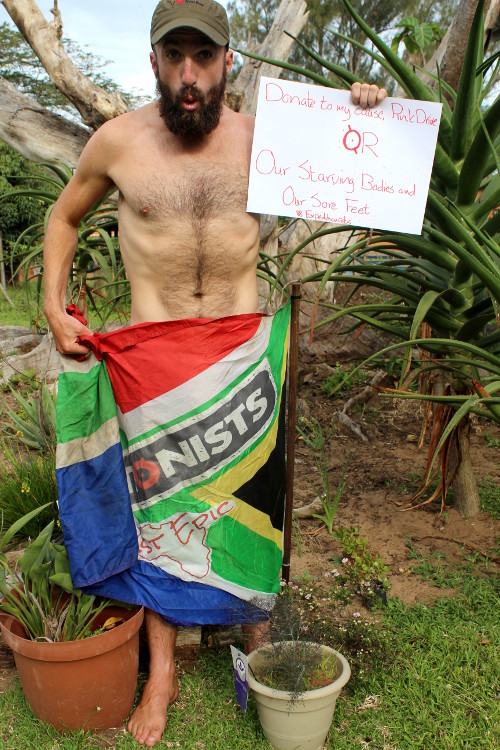
High winds and drug smuggling
The road to Maputo from the southern parts of the Kruger was a breeze with plenty of fun in between from getting new custom made roads carts to being hosted at the Kruger Park Backpackers and joining the hosts on a Rhino Walk fundraising event. By the time we got to Maputo and the old fort we had done 935 km, half way through the expedition. We were treated well at a smart hotel on Catembe beach called the Gallery Hotel for a couple days where we resupplied for the hard slog along Mozambique’s southern coast. This part of the journey was going to be tough on our shoulders and Simphiwe’s feet since this was going to be his first time barefoot. Due to a large river along the coast, we had to take a ferry across to Inhaca Island and then cross Hell’s Gate back to the mainland. On the first day of walking down the southern coast of Mozambique back to South Africa, we were hit by 30 knots winds. This took its toll on our bodies because we had to lean into the wind walking with 25 kgs on our backs and 10 litres of water in each of our hands. We managed to find an opening in the dune vegetation that protected us from the wind and made camp for the day. That night we didn’t speak to each other due to our dry lips, sand blasted bodies and sore shoulders.
The wind blew for the next week as we slowly made progress down the coastline. By the time we reached Ponta Malogone, Simphiwe had picked up an injury on his ankle and was in pain, so we decided to rest at the resort there. Luckily the divers at the dive centre were amazed by our story and were kind enough to provide us with a chalet each to recover. We stayed for 5 days were we participated in dolphin dives, yoga and lots of R & R celebrations at the Sunset Shack. Upon leaving our new friends at Port Malogone, we were arrested by the Mozambique Border Police on suspicion of being drug dealers and crossing the border illegally. After three hours of negotiations, calls to the head office of Maputo and the South African embassy, we were let go and allowed to cross the border to South Africa. What a little twist in our adventure for that day. Struggle and reward. Our reward being a bed, shower and a bottle of wine from our hosts who were a bunch of international doctors at Manguzi hospital.
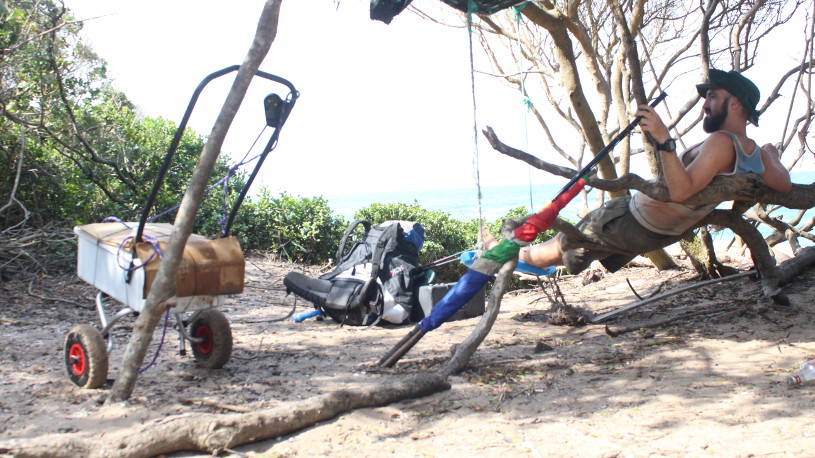
One of the wildest coastlines in South Africa
Our second to last stage of our expedition was the iSimangoliso Wetland Park coastline from Kozi Bay to Richards Bay. This stretch of beach, 250 km long, is one of the wildest coastlines in South Africa. Very few people have ever walked this whole stretch of protected coastline and we were lucky enough to get permission from the game reserve authorities to walk the coastline by ourselves. Large parts of the game reserve have the Big 5 on it, so there was a little danger to our walk. Walking on the beach is tough especially with 25 kg on your back and 10 kg in your hands, however, due to our experiences in Mozambique we were able to adapt and we soon found ourselves reaching the daily 30 km objective. The one harsh thing about this stretch of coastline as well as Southern Mozambique was the lack of water. We had to ration our water use very carefully. Upon reaching St Lucia, Simphiwe’s ankle had swollen up to the size of a balloon so we had to rest a bit in St Lucia for a couple of days so he could see a specialist and recover. On the third day in St Lucia, it was decided that I would would do the last stretch of coastline by myself while Simphiwe was escorted to our destination in Richards Bay. This stretch of beach between St Lucia and Richards Bay is 63 km. This was going to be my biggest feat and challenge to complete this distance in a day. I managed to complete the distance within 10 hours. However, it took a big toll on my feet and legs. By the 45 km mark my upper leg muscles were screaming pain from having to run on the beach barefoot. The skin on my feet had been cut and gazed by the constant climbing over rocks. The worst was the pain of the salt water on the cuts of my feet when I ran in the waves. The tide was also closing in very fast in the afternoon and I often found myself braving waves and high water to get across to the next cove. However, I managed to to reach my destination in Richards Bay even after scaling a cliff face to get up onto the mainland and main road. I still look fondly on this day and what I did, an epic adventure and journey going through each of those struggles, pains, twists and rewards.
The next day my legs were so stiff I could hardly walk properly. Thus, a rest day was needed. This day was spent in and out of ice baths. What a feeling dipping your body into – 5 degree tempatures. The feeling almost becomes a high after you get used to it. However, the ice baths and lots of massages sorted out my legs and both Simphiwe and I were able to walk the next part of the expedition.
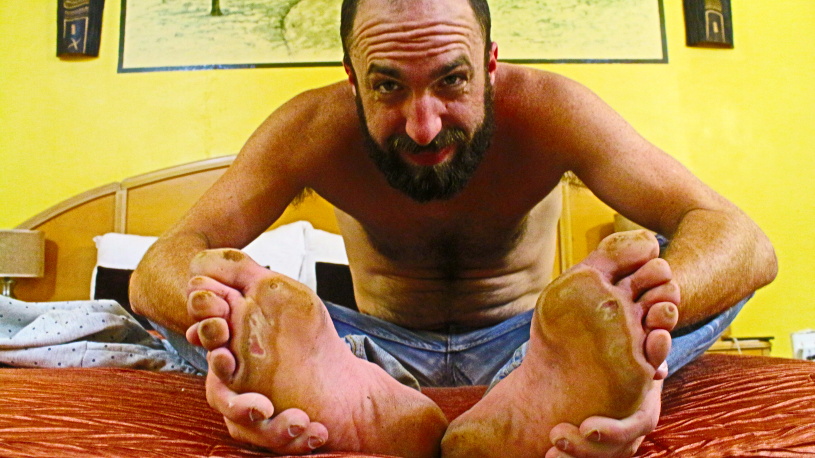
The home straight
The last stage of the expedition was back on the tar roads and highways of KwZulu-Natal. Most part of this journey were unevetful, however, all that cracked and hardened skin I had built up to Maputo had softened up a bit by the 400 km of walking along a coastline. Thus, once my feet hit the hard concrete of the N2 highway, my skin just got sanded off in a few days leaving the underneath of my feet raw. It was not fun coming into Durban, our final destination.
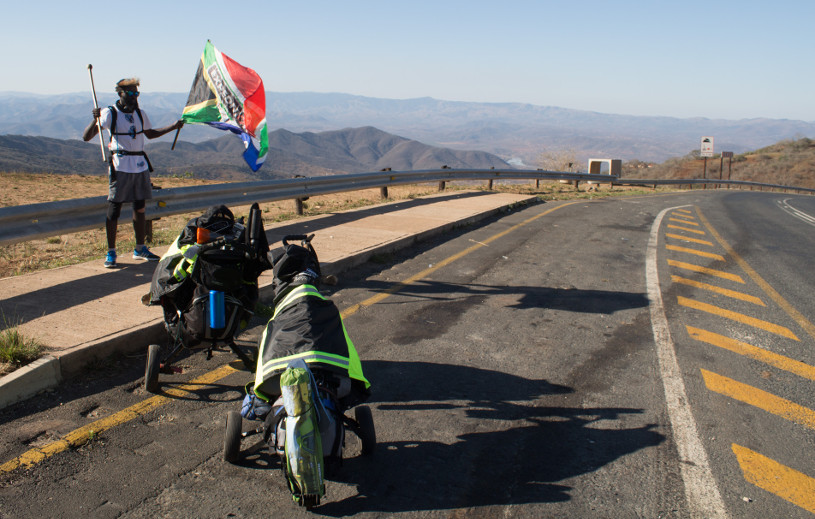
However, the joy of finally finishing and seeing friends and family overpowered the feelings of pain. By the time we reached the John Ross building and statue, I had covered 1,553 km barefoot across three South African countries. This was a 100 km more than the world recorded held by Michael Essign before I left. Unfortunately, at the same time as myself, a Irish male had just completed a circumference of Ireland barefoot, raking 2,000 km and setting a new world record.
What is an adventure?
Anyway, this expedition taught me a lot about living life as an adventure where all struggles, pain, conflicts, twists, rewards, relationships, careers and paths are just a part of the journey towards finding your purpose. An adventure is an extended experience, frought with risk and reward, unpredictable twists, guaranteed obstacles, and surprising results. However, the greatest adventure was not experienced within the landscapes I witnessed, but within me. To challenge myself in the way I did, walking barefoot for 1,553 km with limited resources, forced me to discover how strong my mind was in the determination to reach objectives while experiencing such pain and struggle. I also believed in what my body could take as I threw challenge upon challenge on it. I am a strong human being with a fierce wild mind that has an imagination so large that I have to take it on adventures and journeys of purpose in order to find peace. I am an Expeditionist, a person who seeks life as a series of adventures that lead to one epic journey of purpose to discovery who you are.
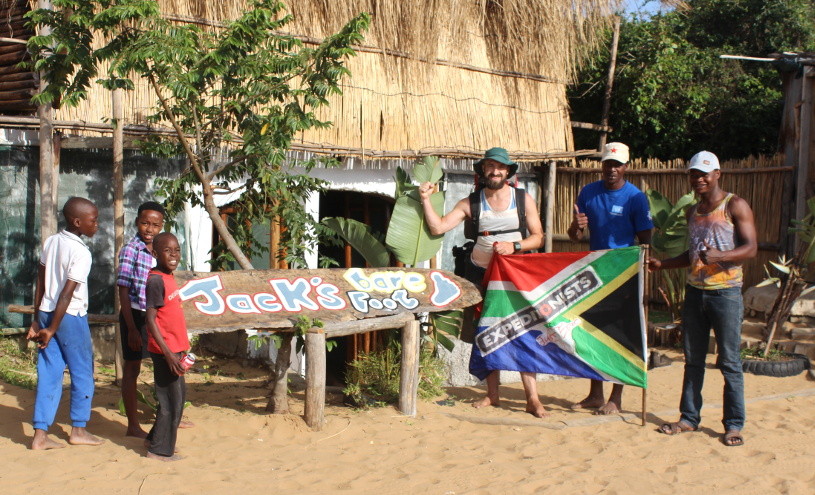
You can read more about Thommo Hart and The Expeditionists at www.expeditionists.org
[one_sixth]–[/one_sixth][two_third][box]
The Next Challenge Grant
The Next Challenge Grant is an annual bursary that funds aspiring adventurers.
It’s funded by me – Tim Moss – several other adventurers and crowdfunded public donations.
Since 2015 it has supported 40 different expeditions with awards from £50 to £800.
[/box][/two_third][one_sixth_last]–[/one_sixth_last]
What do you think? Please do add your thoughts below…